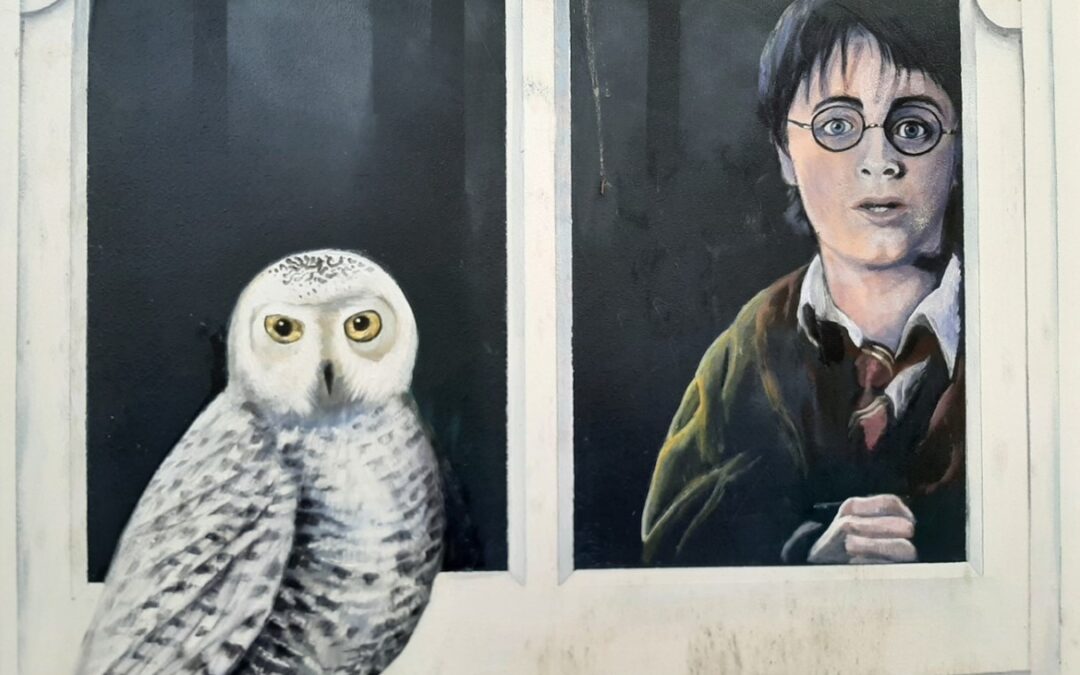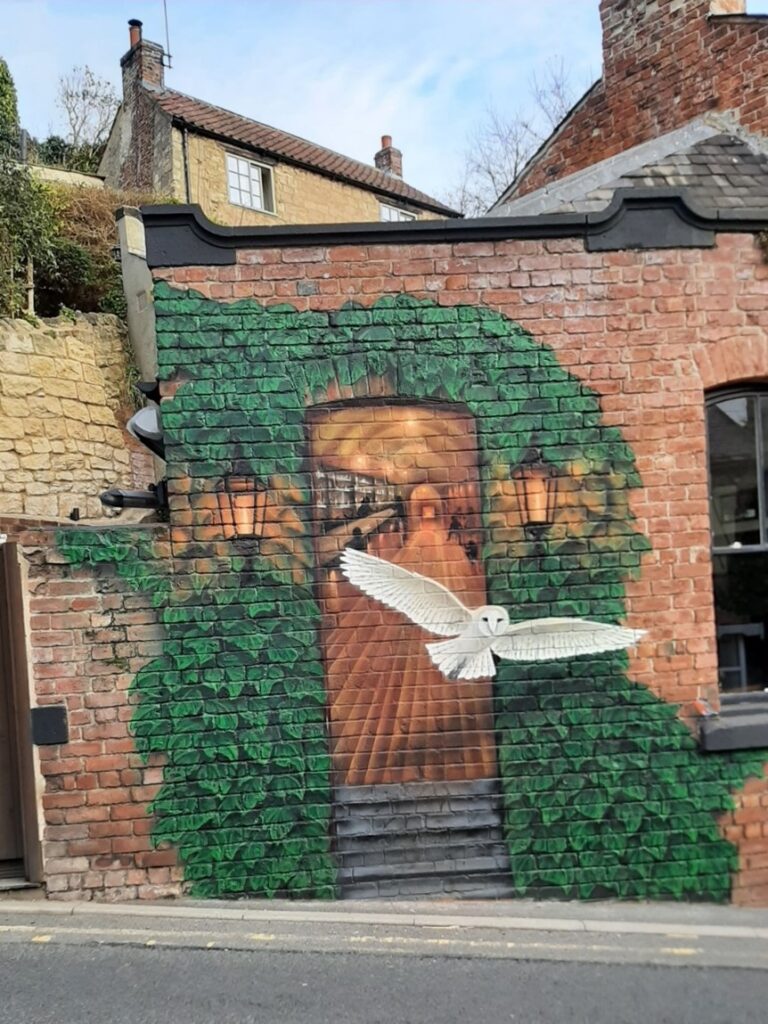The market town of Knaresborough is famous for its public displays of the art technique of ‘trompe l’oeil’, the painting style that sets out to ‘fool the eye’ into seeing a painted picture as something real.
Originally, local artists painted events and people related to Knaresborough’s history on ‘blind windows’ or windows that had been bricked in during the Georgian period to save having to pay a window tax. These paintings proved so popular that that there are now many ‘trompe l’oeil’ artworks on walls and surfaces throughout the town centre.
Inspired, no doubt, by the association of Knaresborough with magic through local legendary prophetess/witch, Mother Shipton, two Harry Potter scenes now adorn the town, much to the delight of the younger population.
The first of these can be viewed on the High Street and depicts Harry looking out of a window whilst his trusty owl, Hedwig, is perched on the windowsill. The second and most recent addition, depicts Hedwig flying out of a picturesque doorway, presumably setting off to deliver a message from his master, the young wizard in training. This artwork can be seen on the side of the Half Moon pub, at the crossroads of Briggate and Abbey Road, just before Low Bridge.
Further examples of ‘trompe l’oeil’ windows include depictions of:
Queen Philippa, who married Edward 111 at York Minster in 1328 and spent her honeymoon at Knaresborough Castle. The castle was part of her marriage settlement, and she made it a royal holiday home for her family. One of her sons, The Black Prince, is illustrated in the painting as a child holding a wooden sword. Tucked away in at the bottom of the painting is a rat – a reminder that this was also the period of the Black Death, the bubonic plaque that killed around a third to half the population and first arrived in Knaresborough in 1349.
Guy Fawkes, the infamous character who tried to blow up the houses of Parliament in 1605. He became radicalised as a teenager when his widowed mother remarried and moved him from York to live with her new Catholic husband in the village of Scotton, just outside Knaresborough.
A zebra and giraffe looking out of a window to commemorate the zoo which was in the grounds of Conyngham Hall in 1965 to 1986. It was particularly famous for its lion, elephant and snakes.
The English Civil War. After the Battle of Marston in 1644, Royalist Knaresborough Castle was besieged by the Parliamentarians until finally after 6 months, the walls were breached. Oliver Cromwell later came to the town to personally supervise the dismantling of the castle in 1648.
There is a Trail of Town Windows which many tourists enjoy following when they visit Knaresborough, and which, of cause, costs them nothing!
Contributed by Yorkshire Bludge Badge Guide, Margy Longhurst – https://yorkshiresbestguides.co.uk/project/margy-longhurst/



